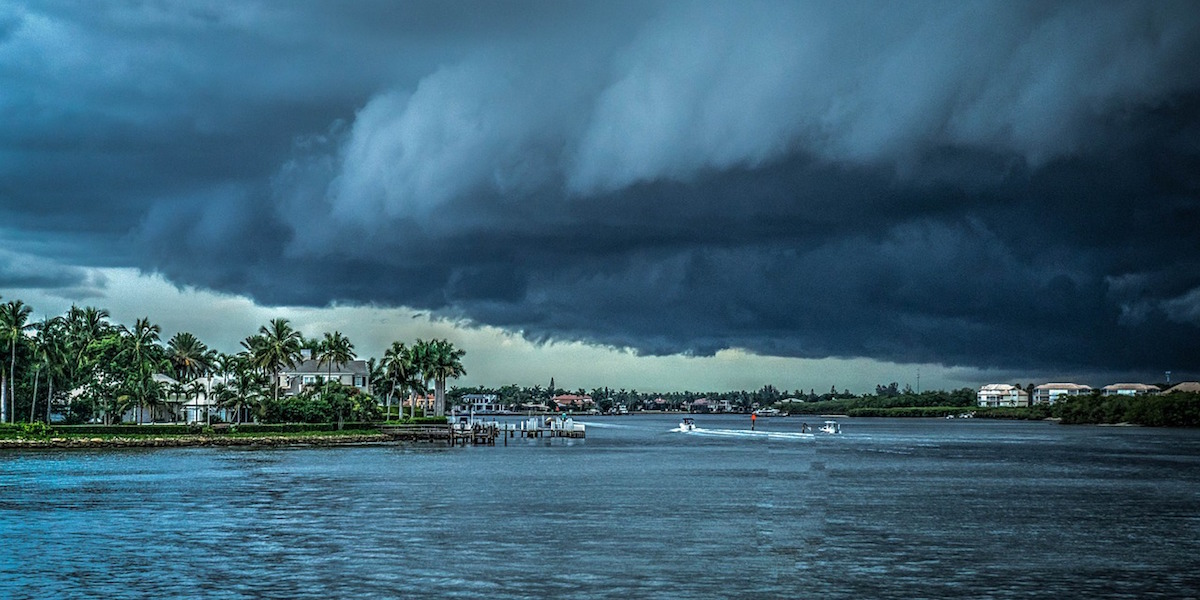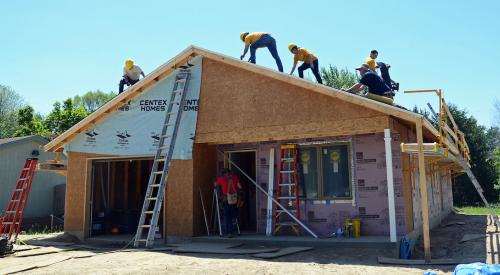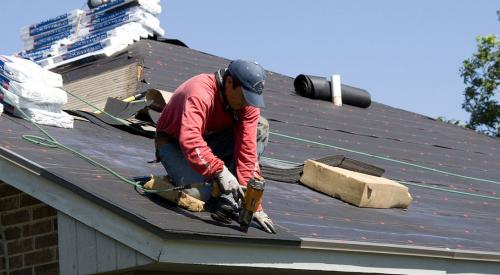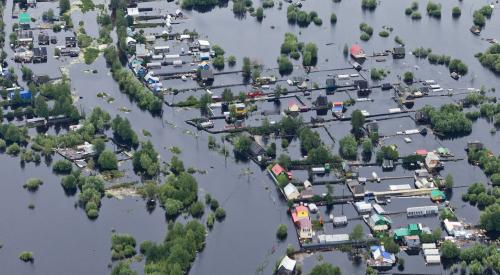Economic impacts of climate change will jump over next two decades
Climate change-induced higher sea levels combined with storm surge will likely increase the average annual cost of coastal storms along the Eastern Seaboard and the Gulf of Mexico by $2 billion to $3.5 billion, according to a new report by the Risky Business Project.
When hurricanes are factored in, that tab will rise to $7.3 billion, the report says. Coastal property and infrastructure will bear the brunt of the damage. This will bring annual price tag for hurricanes and other coastal storms to $35 billion.
If nations around the world continue to pump current levels of greenhouse gas into the atmosphere, by 2050 between $66 billion and $106 billion worth of existing coastal property will likely be below sea level nationwide. Some $238 billion to $507 billion worth of property would be below sea level by 2100.
Property losses from sea level rise are concentrated in the Southeast and Atlantic coasts, where the rise is higher and the losses are projected to be far greater than the national average.
Geotechnical solutions prevent building distress due to expansive clay soils
Each year, billions of dollars in damage to building foundations and structures is caused by shrinking and swelling behavior caused by clay soil.
In fact, expansive clay soil is the most predominant geologic hazard across the U.S. Several geotechnical solutions can alleviate these problems. On new construction, the options are: removal and replacement, capping or burying the expansive material, and treatment with hydrated lime. Structural solutions in new construction include upgraded structural slabs (post-tension, waffle, mat) or elevated slabs supported on deep foundations.
For an existing structure, a forensic geotechnical study is needed to identify and quantify damages, assign causation, and make appropriate recommendations for remediation. Moisture control may be a suitable option for remediation and it is a design requirement for new construction.
In extreme cases, helical anchors and slab (mud) jacking or removal and reworking of soil below an existing structure is necessary. For paved surfaces, expansive clay soils can be remediated with thicker sections of asphalt, reinforced concrete pavements, and lime treatment.
 Kansas City, Mo. Photo: Webherper/Pixabay
Kansas City, Mo. Photo: Webherper/Pixabay
Kansas City tops list of most affordable housing stock
Most people (96%) making the median income in Kansas City, Mo., can get the most for their money when it comes to buying a home. The Midwest city leads the rankings of the most affordable housing stock in the U.S. The median home price in Kansas City is $107,933, and the median income is $62,178. At the other end of the spectrum, in San Francisco, the median home price is $1,296,916 and the median income is $92,501.
Why California’s 50-year-old housing law has failed to generate enough affordable housing
California’s 50-year-old housing law has failed to spur enough housing development. The cost of housing in the Golden State continues to rise. The law requires cities and counties to produce reports to plan for housing but doesn’t hold them accountable for results. In addition, state officials don’t have basic information on the law’s effectiveness, including how many homes are actually built.
State policy having a big impact on where solar grows fastest
State policies are having a huge influence on where solar energy is growing the fastest. Averaging less than five peak hours per day, Minnesota had nearly 340 megawatts of installed solar capacity in 2016, enough to power 49,000 homes. The state passed a law in 2013 requiring investor-owned utilities to get at least 1.5% of electric power from solar by 2020. The state also offers tax incentives for consumers who buy panels made in-state. By contrast, Oklahoma, which ranks among the top 10 states for solar energy potential, has only 5.2 megawatts of solar energy panels installed statewide. Oklahoma has not given priority to solar, and has been more focused on wind power in the renewable energy space.













